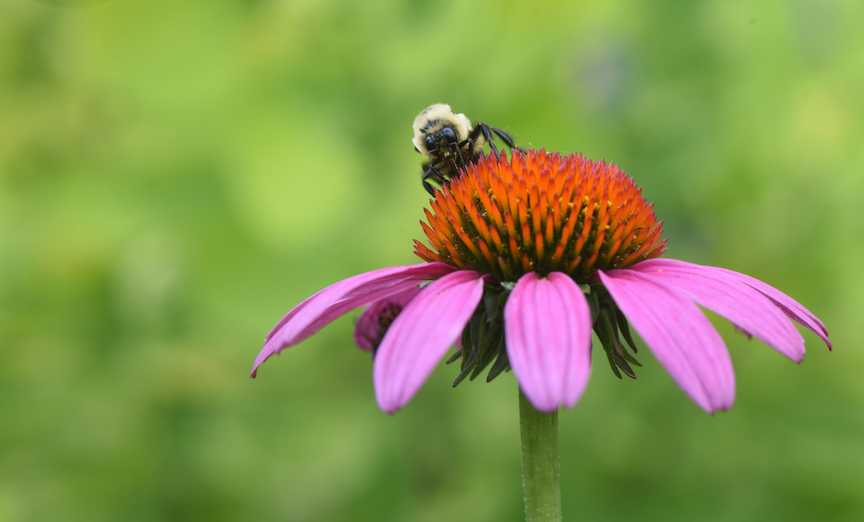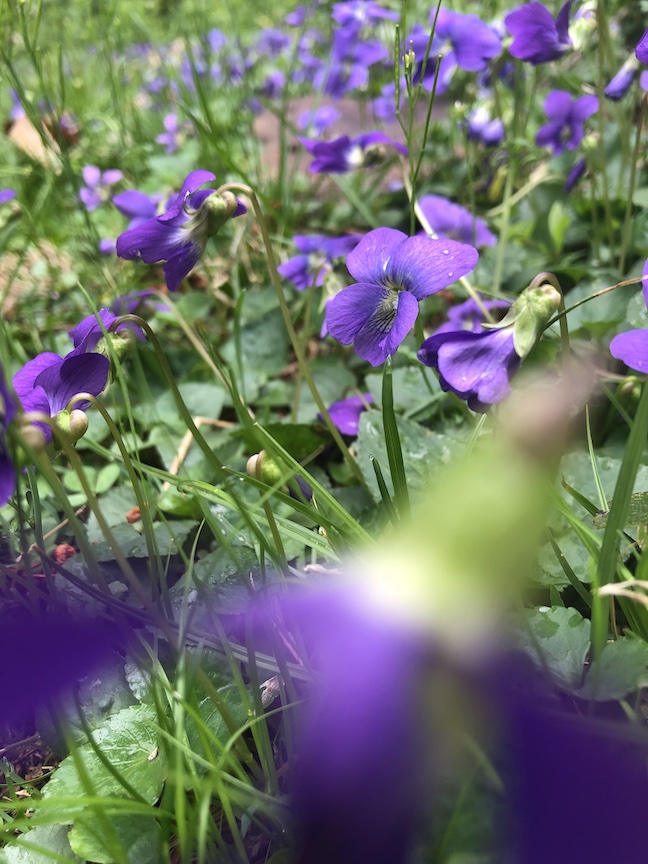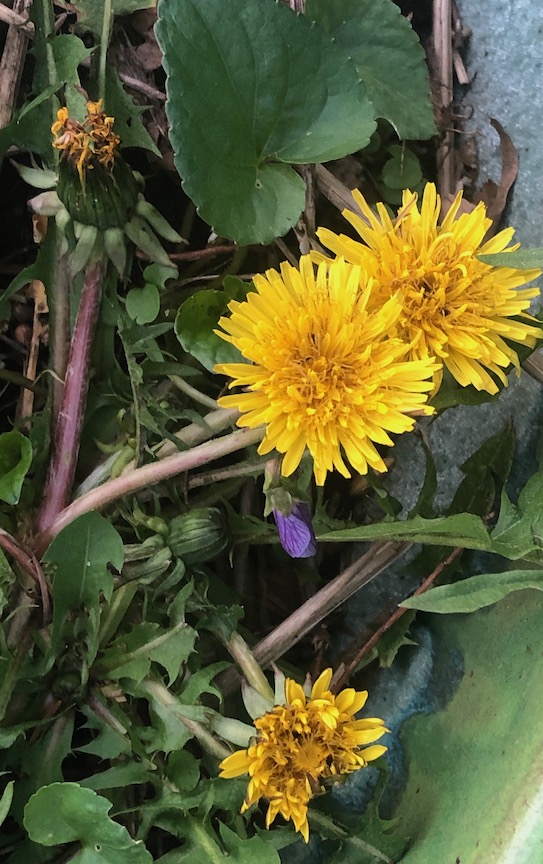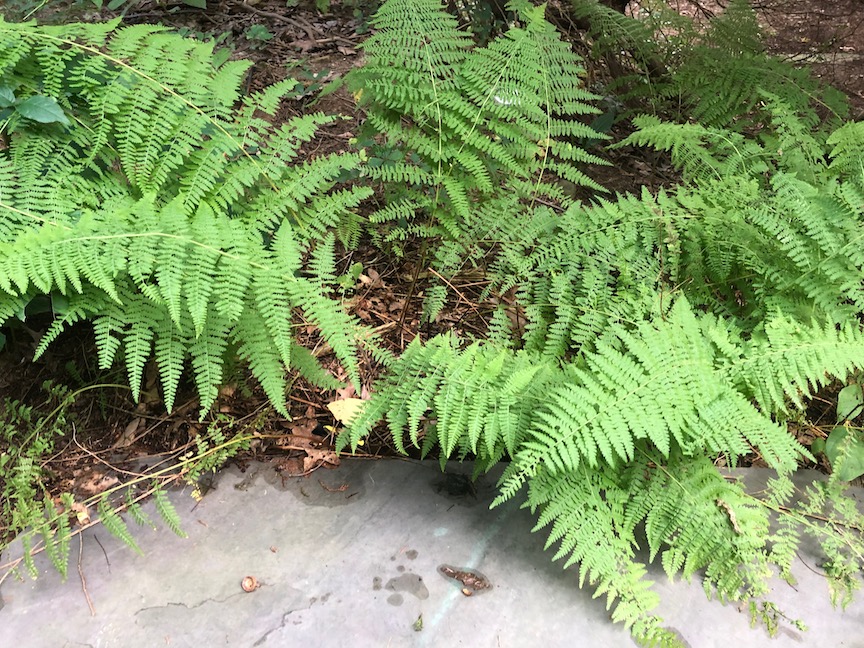
Gardening Green with Doug
Grow a Lush, Organic Green Lawn Without Pesticides
By Doug Oster
May 5, 2022
The wild violets are in full bloom and fill the grass with swaths of lavender.
I’m often asked what to do with those violets, and the answer is always the same.
“Let them be.”
Wild violets are part of the fabric of a green landscape. They are not only beautiful, but they are also edible and a host plant for many fritillary butterflies. Be careful when adding them to a salad though, as any foraged food can take some getting used to for your tummy.
It’s our lawn culture that considers violets and dandelions as weeds, but they are not. These plants are simply wildflowers.
Dandelions are one of the most nutritious plants on the planet, and the flowers are a great food source for pollinators.
Every part of the plant is edible sans the globular seed head. The greens are treasured early in the season. After the plant finishes its flowering cycle, cut it to the ground. The foliage that returns is not as sweet or tender as the first sprouts but is still tasty. They pair well with a red tomato sauce and also balsamic vinegar.
Less lawn and more garden make sense but might not be for everyone. The quilted lawn — one filled with lots of different species — uses less water and requires less maintenance than a monoculture of grass. But for those living in a neighborhood where a pristine lawn is the rule of law, turf can be weed-free and safe.
By eliminating chemicals from the lawn, everything from microbes up to earthworms will help the grass grow. Most importantly the family, kids and pets can walk barefoot on the grass without worry.
The key to growing an organic, weed-free lawn is making the grass happy — like any other plant in the garden. Getting the pH and fertility right in a vegetable garden is easier than improving, five, 10 or 25,000 square feet of lawn.
It’s not an overnight change, but it’s not rocket science either.
Growing a lush, organic, green lawn
The first step is a soil test from your county extension agent. There are scientific numbers and formulas for bringing the soil back. Take the details from the test and apply organic products to improve the soil.
Keeping the grass long, longer than three inches, helps shade out weeds. Spot treat weeds with an organic herbicide like Burn Out or Nature’s Avenger.
The green landscape also includes perennials that don’t need a lot of water and as a bonus attract pollinators. When gardeners help pollinators, pollinators help the garden.
Native plants are one of the best choices, as they have formed symbiotic relationships with local wildlife.
Sun-loving perennials like coneflowers, bee balm, aster, milkweed and others will provide color without lots of watering and will bring in the good bugs.
In the shade trillium, ferns, cardinal flower, goat’s beard and wild ginger are a few tough plants that fit the same bill.
Make mulch part of your yard
Mulch is another part of growing green. A few inches of mulch on top of the soil around any plant will keep the soil evenly moist and the plants will not need as much water when the days get longer and hotter in the summer.
The mulch should never touch the base of the plant and should resemble a donut, not a volcano.
It’s trees where volcano mulch is most prevalent. No one knows why it’s become popular, but any certified arborist will tell you that this method of spreading mulch can kill a tree. Spread the mulch under the dripline of the leaves to make the trees happy.
Tree talk
They say the best time to plant a tree was 20 years ago, the next best time is today.
Trees support lots of wildlife, bring beauty to the landscape, convert carbon dioxide to oxygen and provide shade to reduce energy costs.
Spring is a great time to plant them, know that the trees will need water all summer long and maybe even until the ground freezes at the end of the season — It depends on how dry of a season we have.
One important part of planting is finding the right place for the right tree. Pay attention to how big the tree will be at maturity because it’s actually going to reach that height and width.
If the size at maturity is not considered, the tree becomes a liability five, 10 or 20 years down the road.
One big mistake when gardeners add a tree to the landscape is planting them too deep. Be sure the root flare, where the truck meets the soil, is above grade. Even plants purchased from a nursery could have the root flare covered, use your hands to brush dirt from the bottom of the trunk.
Interesting native trees like sourwood, sugar maple, hemlock, white pine, and redbud have grown here for centuries and are suited for our environment and wildlife.
By planting with smart choices and growing them naturally, a green landscape is not only beautiful, but it’s also a safe outdoor space, even for those living downstream.





Leave A Comment